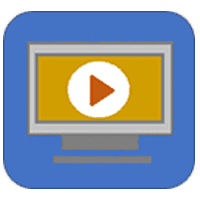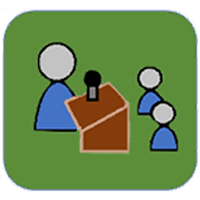Events
Collaborative forest landscape restoration program monitoring: A peer learning session
Webinar recording Description: During this session, USDA Forest Service and collaborative members will explore lessons learned in the first 10 years of CFLRP monitoring - what worked well and what challenges we continue to encounter in the multi-party monitoring of ecological, social, and economic effects. Given those lessons, we will then discuss where we go…
Southwest FireCLIME: Collaborative tools and science developed through JFSP
View short video (6:30) Southwest FireCLIME is a multi-year research partnership between scientists and resource managers to synthesize current knowledge of regional climate-fire-ecosystem dynamics. Our project has addressed this goal through science synthesis, an annotated bibliography, modeling, a vulnerability assessment, and Fire-Climate adaptation tools.
Developing long-term viable stream restoration: Main steps, considerations and lessons learned from Australia, Mexico, and US
Webinar recording. Over the past decade, Mark Briggs and co-editor, W.R. Osterkamp (retired, USGS), along with 55 stream restoration experts have collaborated on a stream restoration guidebook entitled Renewing Our Rivers: Stream Corridor Restoration in Dryland Regions. The guidebook highlights the main steps in developing a restoration response for damaged stream ecosystems that will have…
Insights on effective collaborations between natural and social scientists
Webinar recording. Description: Solving complex environmental problems requires extensive discussions and studies conducted by researchers from diverse disciplines including the natural and social sciences. Solutions to these environmental challenges usually depend on conceptual models of how these systems are linked and the essential processes within them, also known as coupled-human natural systems or socio-ecological systems.…
Insights for resilient forest landscapes in the Rogue Basin of southwestern Oregon
Webinar recording. Description: Severe wildfires threaten forests and communities of the northern Klamath Mountains. Historically these forests thrived with frequent, low-mixed severity fire. However, hotter, drier summers, a century of fire exclusion, and past destructive logging practices are increasing the likelihood of destructive fire. Insights from historical fire regimes and stand conditions have been integrated…
Assessing FIRESHEDS for prioritization, planning, and investment
Webinar recording. Description: The first webinar in a series of virtual learning opportunities that address the cultural shifts and adaptations that are being embraced at all levels to evolve and advance progress toward the vision and goals of the Cohesive Wildland Fire Strategy. Presenter: Alan Ager, Research Forester, USFS Rocky Mountain Research Station
Colorado Wildland Fire Virtual Conference
Visit conference website. This year's conference, Discover Your Role: Reducing Wildland Fire Risk will provide an in-depth exploration of how community members across the spectrum can effectively contribute to better fire outcomes and provide community wildfire resilience leaders with new knowledge and tools for engaging partners and the public.
Creating firebreaks with targeted cattle grazing in the Owyhee Front
Watch video, 11:45 Six ranchers are working with the Bureau of Land Management during the spring months to reduce fuel loads (mostly cheatgrass) on the front side of the Owyhee Mountains in Idaho with tightly controlled cattle grazing. The goal is for the cattle to "mow" cheatgrass and grasslands to a 2-3 inch stubble height…
Emotional intelligence for wildland fire professionals: Why it matters and why you should care
Webinar recording. Description: It is crucial for wildland fire professionals today to be technically competent in their jobs. What is less obvious and less understood is the cognitive competency needed for our professional job performance. Better understand your own thought processes and how we make decisions on emotional feelings, social inputs, and how developing a…
Wildfire risk to communities: New features and data
Webinar recording. Wildfire Risk to Communities is a national tool with interactive maps, charts, and resources to help every community in the U.S. understand, explore, and reduce wildfire risk. In the fall of 2020, the website was updated with new data and features, including new map views and GIS data available for download. During this…




